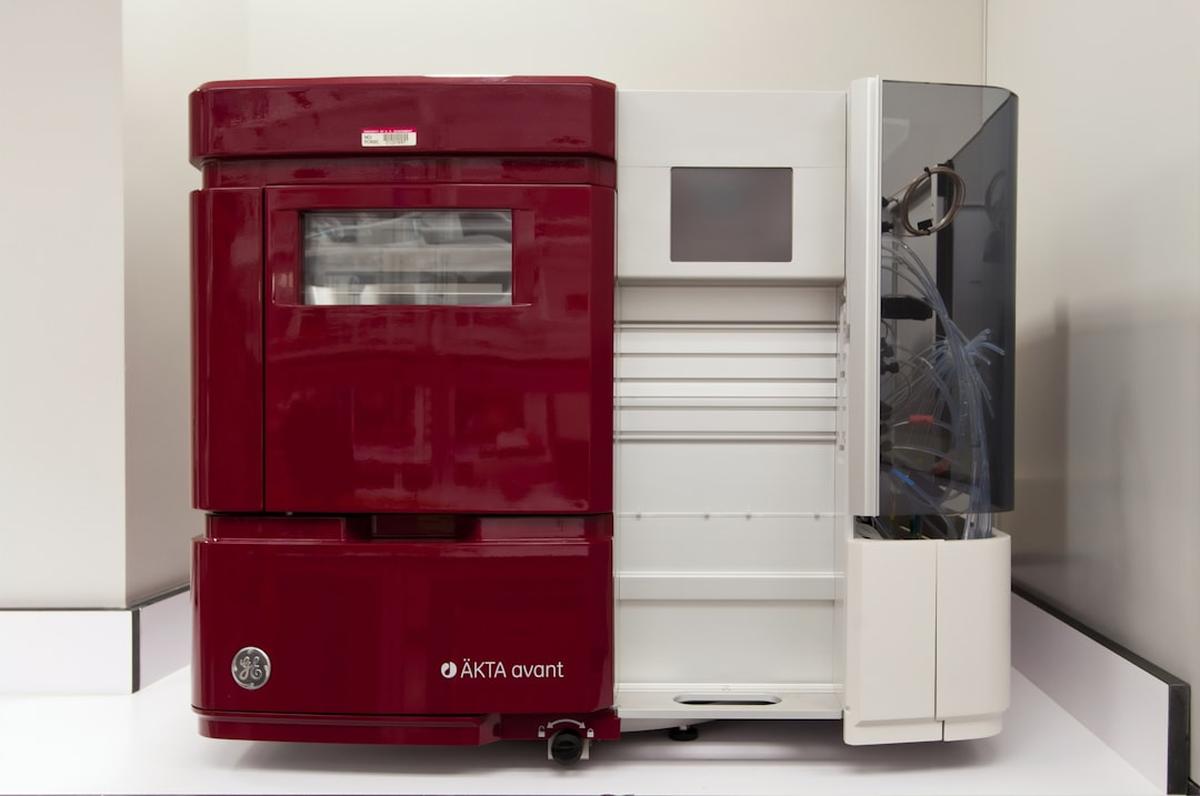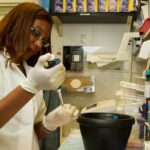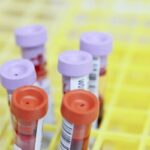Life, as we know it, is a product of evolution. The blueprint of life, DNA, holds the key to this complex process. The DNA molecule, a double helix structure discovered by Watson and Crick in 1953, is responsible for the traits we inherit from our parents. However, these traits can change over time due to mutations in the DNA sequence, driving the process of evolution. Understanding these changes and their causes is crucial to comprehend the mechanism of evolution.
The Role of DNA in Evolution
DNA as the Blueprint of Life
DNA, or deoxyribonucleic acid, is a molecule that carries the genetic instructions for the development, functioning, growth, and reproduction of all known organisms and many viruses. These instructions are encoded in the sequence of the four nucleotide bases that make up the DNA molecule: adenine (A), guanine (G), cytosine (C), and thymine (T). The order of these bases determines the information available for building and maintaining an organism.
How DNA Changes Influence Evolutionary Processes
Changes in the DNA sequence, known as mutations, can lead to variations in the traits of organisms. These variations can influence an organism’s ability to survive and reproduce, driving the process of natural selection. Over time, beneficial mutations tend to increase in frequency in a population, leading to evolutionary change.
The Mechanism of DNA Mutation
Explanation of DNA Replication
DNA replication is a biological process that occurs in all living organisms and is the basis for biological inheritance. The process begins with the unwinding of the double helix to expose the bases. Each strand of the original DNA molecule then serves as a template for the production of its counterpart, a process referred to as semiconservative replication.
The Occurrence of Spontaneous Mutations during DNA Replication
Despite the high fidelity of DNA replication, errors occasionally occur, leading to changes in the DNA sequence. These changes, known as spontaneous mutations, can occur due to mistakes made by the DNA polymerase during replication or because of damage to the DNA molecule.
Environmental Factors that Cause DNA Mutations
Impact of Radiation on DNA
Radiation, particularly ionizing radiation, can cause DNA damage leading to mutations. This type of radiation, which includes X-rays and gamma rays, can cause single and double-strand breaks in the DNA molecule, leading to changes in the DNA sequence.
The Role of Chemicals in the Environment in DNA Mutation
Certain chemicals in the environment, known as mutagens, can also cause DNA mutations. These chemicals can interact with the DNA molecule, causing alterations in the DNA sequence. Examples of such chemicals include tobacco smoke, certain pesticides, and some types of industrial chemicals.
The Role of High-Energy Sources in DNA Mutation
Understanding High-Energy Sources
High-energy sources, such as ultraviolet (UV) light and certain types of radiation, can cause DNA damage leading to mutations. These sources can cause the formation of pyrimidine dimers, structures that distort the shape of the DNA molecule and can lead to errors during DNA replication.
How High-Energy Sources Induce DNA Mutations
High-energy sources can cause DNA mutations by directly damaging the DNA molecule or by producing reactive oxygen species that can interact with the DNA molecule. This interaction can lead to changes in the DNA sequence, resulting in mutations.
Spontaneous Mutations and Evolution
Defining Spontaneous Mutations
Spontaneous mutations are changes in the DNA sequence that occur naturally and randomly without any specific cause. These mutations can occur during DNA replication or as a result of damage to the DNA molecule.
The Impact of Spontaneous Mutations on Evolution
Spontaneous mutations provide the raw material for evolution. These random changes in the DNA sequence can lead to new traits in organisms. If these traits are beneficial, they can increase an organism’s chances of survival and reproduction, leading to an increase in the frequency of these traits in a population over time.
The Impact of DNA Mutations on Species Evolution
Positive Effects of DNA Mutations on Evolution
DNA mutations can have positive effects on evolution by providing variation, which is the raw material for evolution. These variations can lead to new traits that can increase an organism’s ability to survive and reproduce. Over time, these beneficial traits can become more common in a population, leading to evolutionary change.
Negative Effects of DNA Mutations on Evolution
However, not all DNA mutations are beneficial. Some mutations can lead to harmful traits that decrease an organism’s ability to survive and reproduce. These harmful mutations tend to decrease in frequency over time due to natural selection.
Case Studies of DNA Changes Driving Evolution
Case Study 1: Evolution of the Peppered Moth
The evolution of the peppered moth in the UK during the Industrial Revolution is a classic example of how DNA changes can drive evolution. During this time, soot from factories darkened the trees, providing a better camouflage for dark-colored moths. This led to an increase in the frequency of the dark-colored moth in the population, an example of natural selection driven by changes in the environment.
Case Study 2: Evolution of Antibiotic Resistance in Bacteria
Another example of DNA changes driving evolution is the evolution of antibiotic resistance in bacteria. Mutations can lead to changes in the bacteria that make them resistant to antibiotics. These resistant bacteria can then reproduce, leading to an increase in the frequency of antibiotic resistance in the bacterial population.
Current Research and Future Perspectives on DNA Changes and Evolution
Recent Findings in the Field
Recent research in the field of evolutionary biology has shed light on the complex mechanisms of DNA mutation and their role in evolution. For example, studies have shown that the rate of DNA mutation can vary significantly between different species and even between different individuals within a species.
Potential Future Developments and Research Directions
Future research in this field is likely to focus on understanding the factors that influence the rate of DNA mutation and how these mutations drive the process of evolution. This research could have important implications for our understanding of evolution and could also have practical applications in fields such as medicine and conservation biology.
Conclusion
Conclusion, DNA changes, or mutations, are a key driver of evolution. These changes can occur spontaneously or can be caused by environmental factors such as radiation and chemicals. Understanding the causes of these changes and their impact on evolution is crucial for our understanding of the process of evolution. This understanding could also have important practical implications, for example, in the development of strategies to combat antibiotic resistance in bacteria.
Frequently Asked Questions
What is a DNA mutation?
A DNA mutation is a change in the DNA sequence. These changes can occur spontaneously or can be caused by environmental factors such as radiation and chemicals.
How do DNA mutations drive evolution?
DNA mutations can lead to variations in the traits of organisms. These variations can influence an organism’s ability to survive and reproduce, driving the process of natural selection. Over time, beneficial mutations tend to increase in frequency in a population, leading to evolutionary change.
What are some examples of DNA changes driving evolution?
Examples of DNA changes driving evolution include the evolution of the peppered moth in the UK during the Industrial Revolution and the evolution of antibiotic resistance in bacteria.
What are the positive and negative effects of DNA mutations on evolution?
DNA mutations can have positive effects on evolution by providing variation, which is the raw material for evolution. However, not all DNA mutations are beneficial. Some mutations can lead to harmful traits that decrease an organism’s ability to survive and reproduce.
What is the role of high-energy sources in DNA mutation?
High-energy sources, such as ultraviolet (UV) light and certain types of radiation, can cause DNA damage leading to mutations. These sources can cause the formation of pyrimidine dimers, structures that distort the shape of the DNA molecule and can lead to errors during DNA replication.
What is the future direction of research on DNA changes and evolution?
Future research in this field is likely to focus on understanding the factors that influence the rate of DNA mutation and how these mutations drive the process of evolution. This research could have important implications for our understanding of evolution and could also have practical applications in fields such as medicine and conservation biology.
References:
- Alberts, B., Johnson, A., Lewis, J., Raff, M., Roberts, K., & Walter, P. (2002). Molecular Biology of the Cell. New York: Garland Science.
- Ridley, M. (2004). Evolution (3rd ed.). Oxford: Blackwell Publishing.
- Watson, J. D., & Crick, F. H. C. (1953). Molecular Structure of Nucleic Acids: A Structure for Deoxyribose Nucleic Acid. Nature, 171(4356), 737–738.








